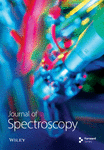Laser-induced chlorophyll fluorescence and reflectance spectroscopy of cadmium treated Triticum aestivum L. plants
Abstract
The present study deals with laser-induced chlorophyll fluorescence (LICF) spectra, reflectance spectra and fluorescence induction kinetics (FIK) curves of Triticum aestivum L. plants treated with different concentrations of cadmium (0.01, 0.1 and 1.0 mM). LICF spectra were recorded in the region of 650–780 nm using violet diode laser (405 nm) and FIK curves were recorded at 685 and 730 nm using red diode laser (635 nm) for excitation. Reflectance spectra were recorded in the region of 400–800 nm using spectrophotometer with an integrating sphere. The fluorescence intensity ratios (FIR) were determined from LICF spectra, vitality index (Rfd) from FIK curves and narrow band vegetation index (NBVI) from reflectance spectra. These parameters along with plant growth parameters and photosynthetic pigment contents were used to analyze the effect of cadmium on wheat plants. The results clearly show that lower concentration of Cd (0.01 mM) shows stimulatory response; whereas higher concentrations (0.1 and 1.0 Mm) are hazardous for plant growth, photosynthetic pigments and photosynthetic activity of wheat plants.




